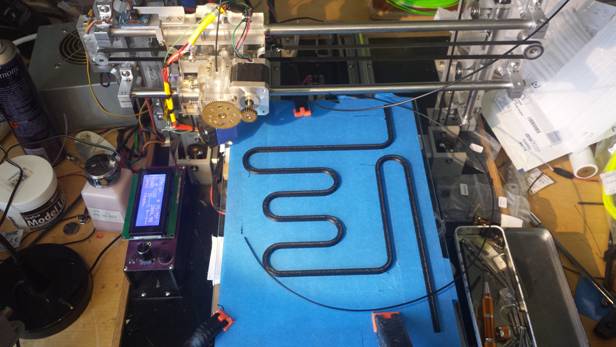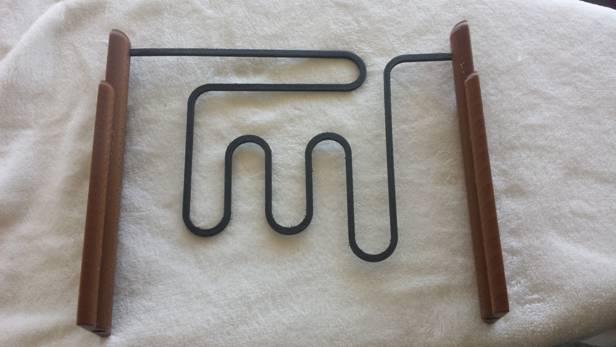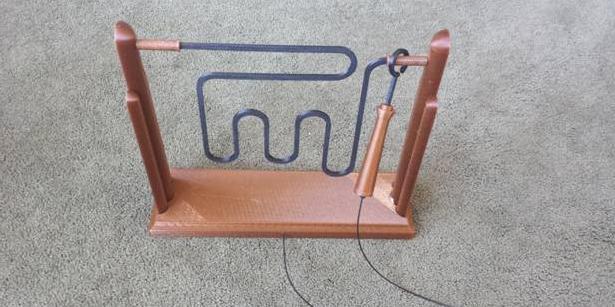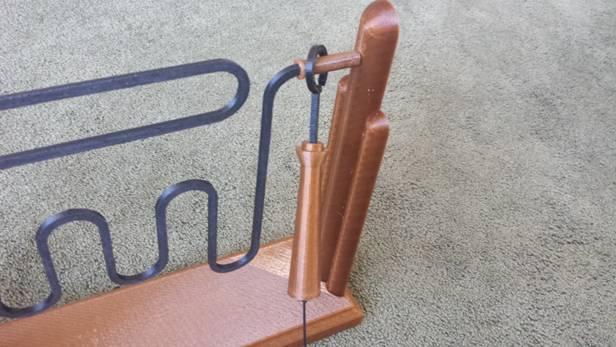Two years ago, if you asked me what desktop 3D printers could possibly be used to create, my answer would have been very short. You would have been limited to creating plastic prototypes and other doodads which didn’t provide much functionality. However, two years later the entire landscape has changed, and thanks to the vast array of materials which have continued to come to market, my answer has changed as well. We now have composite materials, conductive filaments, and even glow-in-the-dark materials that can be extruded from most FFF/FDM-based 3D printers.
This has led a man named Tony Jones, in collaboration with GlobalFSD, to come up with an entertaining game which is entirely 3D printed, yet functions like a toy that seems definitely include some metal parts. Thanks to a  Conductive PLA filament from Proto Pasta, which is available to sample for just £3.50 / $5.29 on GlobalFSD, this was all made possible.
Conductive PLA filament from Proto Pasta, which is available to sample for just £3.50 / $5.29 on GlobalFSD, this was all made possible.
The toy that Tony created is what he refers to as a “Buzz Trace,” and it features eight 3D printed parts which took a total of over 17 hours of print time to complete. That game, which we all probably have seen or played with at some point in our lives, will certainly test your nerves.
“You have to guide the feed handle up and down the trace (black line) to the other end without touching the black line, and if you touch the black trace a buzzer will go off,” Tim Kay, co-founder of GlobalFSD, tells 3DPrint.com. “Normally the line from one pillar (side) to the other would be made of metal, however for this game, the line is made from plastic (Conductive PLA)! You would not expect plastic to touch plastic and be able to set off a buzzer, but using the conductive plastic allows you to do this.”
 The game will be part of a larger exhibit that GlobalFSD will have at the upcoming TCT Show in September, promoting the company’s filament sampling marketplace.
The game will be part of a larger exhibit that GlobalFSD will have at the upcoming TCT Show in September, promoting the company’s filament sampling marketplace.
As for Tony, he is a retired engineer who built his own 3D printer from scratch and this game was entirely 3D printed on his machine. It includes the following parts:
- Base – 8 hours of printing – 52 meters of filament
- Pillars – 3 hours each – 20 meters of filament per
- Handle – 1.5 hours – 3 meters of filament
- Docking Stations – 21 minutes each – 0.6 meters of filament per
- Conductive Trace – 1.25 hours – 8.25 meters of filament
- Hook – 10 minutes – 1 meter of filament
- Connection Lead
Tony has made two videos showing this unique 3D printed ‘Buzz Trace’ in action. These can be seen below. Be sure to visit the GlobalFSD booth at TCT this fall in order to see this game as well as others that have been entirely 3D printed. What do you think about this incredible 3D printed game? Discuss in the 3D Printed Buzz Trace forum thread on 3DPB.com.
Subscribe to Our Email Newsletter
Stay up-to-date on all the latest news from the 3D printing industry and receive information and offers from third party vendors.
You May Also Like
Precision at the Microscale: UK Researchers Advance Medical Devices with BMF’s 3D Printing Tech
University of Nottingham researchers are using Boston Micro Fabrication‘s (BMF) 3D printing technology to develop medical devices that improve compatibility with human tissue. Funded by a UK grant, this project...
3D Printing Webinar and Event Roundup: April 21, 2024
It’s another busy week of webinars and events, starting with Hannover Messe in Germany and continuing with Metalcasting Congress, Chinaplas, TechBlick’s Innovation Festival, and more. Stratasys continues its advanced training...
3D Printing Webinar and Event Roundup: March 17, 2024
It’s another busy week of webinars and events, including SALMED 2024 and AM Forum in Berlin. Stratasys continues its in-person training and is offering two webinars, ASTM is holding a...
3D Printed Micro Antenna is 15% Smaller and 6X Lighter
Horizon Microtechnologies has achieved success in creating a high-frequency D-Band horn antenna through micro 3D printing. However, this achievement did not rely solely on 3D printing; it involved a combination...































